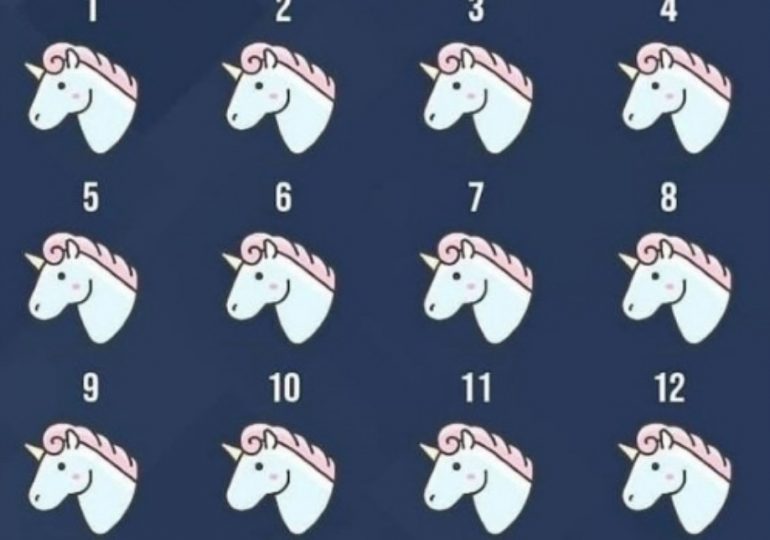EVERYONE can spot the unicorns but only those with a high IQ can spot the odd one out in 12 seconds
Only those with a keen eye for detail and 20/20 vision can succeed in this challenging brain teaser.
jagranjoshCan you spot the odd unicorn out?[/caption]
There are nine identical unicorns – and one that is missing a feature.
Take a look at careful look at all 10 images of the unicorn, can you spot odd the odd one out?
Make sure you cast a keen eye over the picture and scan every nook and cranny of this mind-boggling puzzle.
Get yourself comfortable and set your timer.
You will need great attention to detail and composure to succeed in this challenge as all is not what it seems.
Picture puzzles are a form of brain teaser that tests the reader’s critical thinking and problem-solving skills.
These challenges have the potential to boost intelligence and improve concentration.
If you find this challenge too easy, or enjoy testing your brain, have a look at our other optical illusions.
To make things harder, try figuring out what’s wrong with this image of smiling women as you count their legs in 11 seconds.
Or you might want to prove you have a 20/20 vision as you search for a strawberry in this carnival scene.
Did you know that optical illusions have an array of benefits for your mind and body?
How do optical illusions work?
Seeing is believing right? But what happens when what you’re seeing, isn’t always what it seems to be?
Optical illusions and mind puzzles can often trick even the keenest of minds.
So let’s break down how they work:
Our brain is like a blind supercomputer; it’s very smart, but it can’t see. It’s just a really smart blob.
To figure out what it needs, our eyes tell our brain what the things around us look like. The problem is our eyes only know a handful of words to describe what they see.
Optical illusions happen when our brain and eyes try to speak to each other in simple language but the interpretation gets a bit mixed-up.
A lot of scientists have worked very hard for many years trying to understand how optical illusions work. But the truth is, in many cases, we still don’t know for sure.
Psychologists at The University of Glasgow found that staring at an optical illusion can improve eye sight by allowing you to see small print.
Escape London says puzzles can also give your mind a great workout and may “boost your brain’s activity” which “reduces the risk of dementia.”
Still haven’t found the odd unicorn out?
Here’s a handy hint: It’s a feature we all need to have in order to survive.
Did you spot the different unicorn?
Congratulations! You have 20/20 vision and a high IQ.
If not, don’t worry – we’ve added the solution below.
Keep your brain engaged and have a go at our three other illusions.
jagranjoshCongratulations! You found it![/caption]
GalabingoCan you spot the bird in 12 seconds?[/caption]
jagranjoshCan you spot the 10 differences in this picture?[/caption]
Can you find the hidden crab?
GalabingoFound it! The bird was on a cloud[/caption]
jagranjoshWell done! You found them all![/caption]
Found it! The crab was hidden in the bushes
Leave a comment








